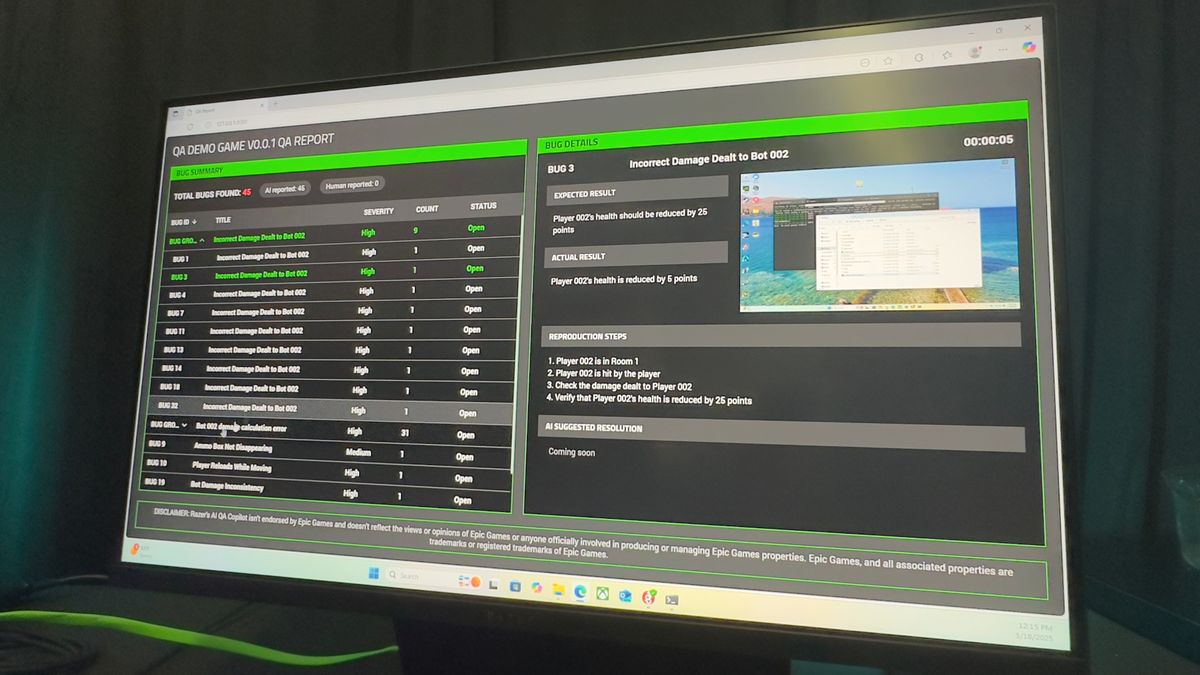Razer’s New AI QA Copilot May Not Target PC Gamers, But It Has the Potential to Benefit All and Become the Essential AI Application Needed Today

Razer’s AI QA Copilot: A New Tool for Game Developers
Creating a standout video game involves numerous factors, including storyline development, graphics design, and engaging gameplay. However, one of the most challenging aspects for developers is addressing bugs. These can range from minor animation issues to serious glitches that disrupt the entire gaming experience. To assist developers in this area, Razer has introduced an innovative tool: the AI QA Copilot.
What is the AI QA Copilot?
Razer, a company best known for its gaming peripherals such as mice, keyboards, and RGB lighting, has ventured into software for quality assurance (QA) in game development. The AI QA Copilot, part of Razer’s new software ecosystem named Wyvrn, is designed to automate the process of identifying bugs during game testing.
Key Features of AI QA Copilot
Bug Identification: The AI system tracks bugs as they occur during gameplay, generating reports that specify the nature of the bug, the steps to reproduce it, and relevant video footage of the issue.
Database Management: Identified bugs are logged into a database along with a severity level, helping developers prioritize fixes based on impact.
- Game Genre Adaptability: The AI model is tailored to different game genres. For example, a different model is applied for a multiplayer online battle arena (MOBA) game compared to an open-world role-playing game (RPG).
Demonstration Insights
During a demonstration at the Game Developers Conference (GDC), the AI QA Copilot showcased its capabilities. It successfully identified a variety of bugs, including:
- Hitbox inconsistencies
- Incorrect damage calculations
- Animation glitches
This feature positions Razer’s solution as competitive against similar offerings, such as Nvidia’s AI QA system.
Benefits for QA Testers
For quality assurance testers, the AI QA Copilot reduces the repetitive tasks involved in bug logging and tracking. This enables testers to focus more on exploring the game and verifying bugs. While the system doesn’t correct bugs outright, it’s expected to eventually provide suggestions for potential fixes.
Potential Challenges
Although the AI QA Copilot presents promising capabilities, there are some concerns. AI technology can sometimes produce unreliable results, potentially leading to false positives. This might occur if the system inaccurately identifies bugs or the steps necessary to replicate them. Additionally, there may be legal concerns regarding the use of the term "Copilot," as it is associated with Microsoft products.
The Positive Impact on Gamers
If the AI QA Copilot functions as intended and gains popularity among developers, gamers stand to benefit significantly. The gaming community has often faced issues with games launching riddled with bugs. If the Razer tool can reduce these issues, even by 30%, it would mark a significant improvement in game quality. Ultimately, this could lead to a better overall experience for players, enhancing the reputation of game developers and the satisfaction of gamers alike.
With the introduction of the AI QA Copilot, Razer aims to bridge the gap between hardware and software for developers, making the challenging bug-fixing process smoother and more efficient, thereby fostering the creation of polished and enjoyable games.






